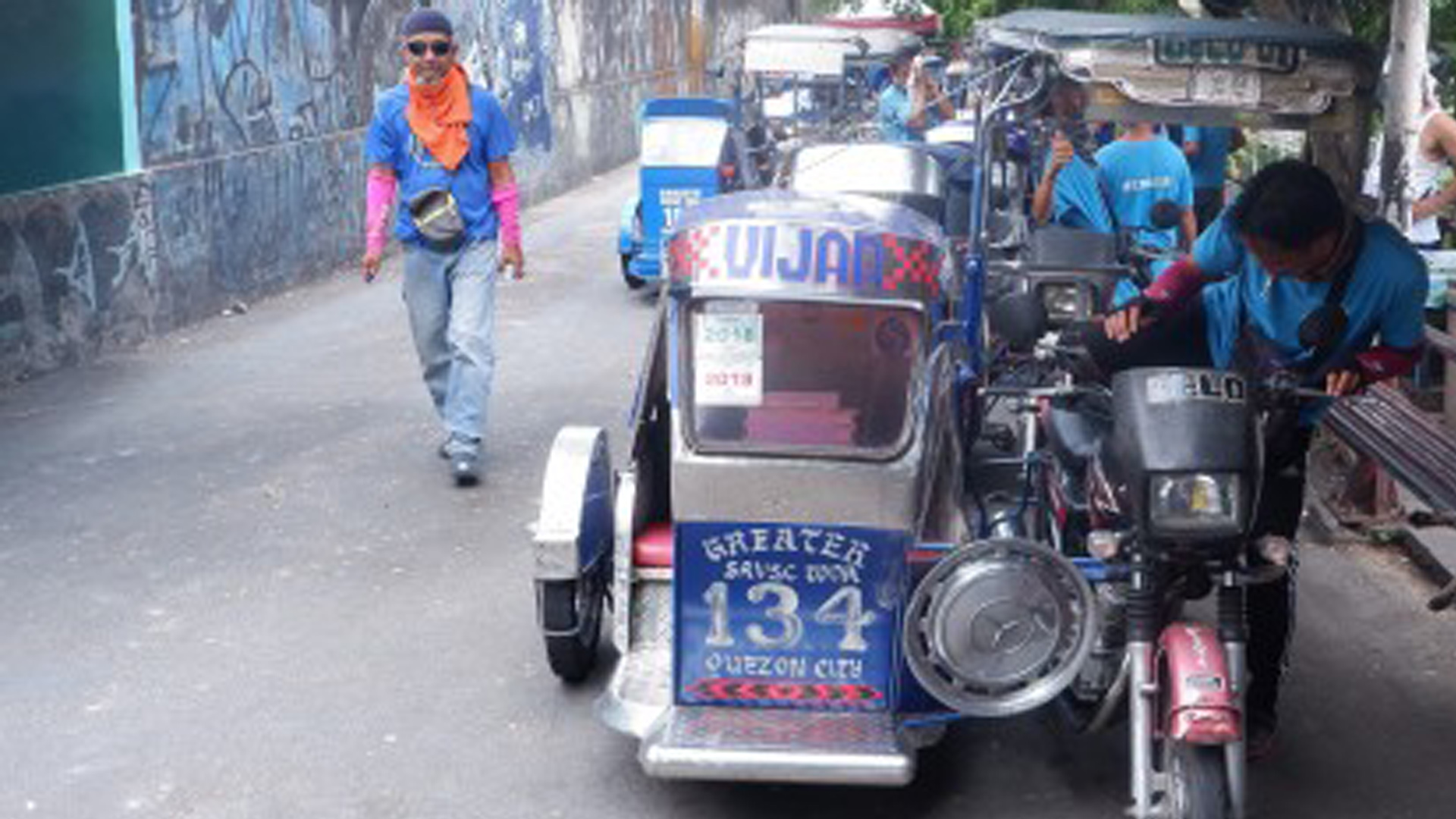Tricycles are still prohibited from traversing national highways, Malacañang said Thursday.
Presidential Spokesperson Harry Roque made this clarification after saying in an earlier press briefing that sidecars are now allowed on national highways.
“Regarding the issue on tricycles/those similarly situated, Interior Secretary Eduardo Año clarifies that although apprehension from the Highway Patrol Group (HPG) is temporarily suspended, such are still prohibited from traversing the national highways,” he said in a statement.
On Monday, Año suggested that those who wanted to ride on the same motorcycle should get a sidecar since motorcycle backriding even for married couples remains banned.
“Unti-unti po ay gumagawa tayo ng bicycle lane, gagawa tayo ng tricycle lane at lagyan na lang po ng sidecar iyong motor at puwede namang isama niya iyong kaniyang misis (We are slowly making bicycle lanes and add a sidecar to a motorcycle so that you can travel with your wife),” he said.
Motorcycle backriding is prohibited in areas under general community quarantine (GCQ) and modified GCQ since physical distancing cannot be observed.
In a separate statement on Thursday, Department of the Interior and Local Government (DILG) Undersecretary and spokesperson Jonathan Malaya said the urgent clarification was made after conferring with Año, Roque, and Department of Transportation (DOTr) Secretary Arthur Tugade.
“Nililinaw po ng DILG na bawal pa rin ang tricycles at pedicabs sa national highways kahit pa nasa GCQ o MGCQ level na ang ilang lokalidad. Bago pa man magsimula ang pandemya ng Covid-19 ay ipinagbabawal na ito ng batas para na rin sa kaligtasan ng publiko (The DILG wants to clarify that tricycles and pedicabs are still banned on national highways even in GCQ or MGCQ level. Even before the Covid-19 pandemic, these were already prohibited for the public safety),” he said.
He said what was suspended because of Covid-19 was the Road Clearing Operation 2.0 but the prohibition on tricycles and pedicabs is provided for by law and could not, therefore, be suspended by the DILG.
On top of Republic Act No. 4136 or the Land Transportation and Traffic Code, prior DILG directives – DILG Memorandum Circulars (MCs) 2020-036, 2020-004, 2011-68, and 2007-11 – have already been issued prohibiting the operation of tricycles and pedicabs on national roads and prescribing the operating conditions and franchising of tricycles.
Año said local government units (LGUs) are the ones regulating the operation of tricycles and pedicabs on the secondary roads.
“Pinapayagan lamang po ang operasyon ng tricycles sa secondary roads at ipinag-uutos na ng Inter-Agency Task Force for the Management of Emerging Infectious Diseases (IATF-EID) ang one-passenger, no-back ride policies sa lahat ng GCQ at MGCQ areas (Tricycles are allowed only on the secondary roads and IATF-EID ordered no-back ride policies in all GCQ and MGCQ areas),” he said.
Año reiterated Roque’s pronouncement that mayors may not give authorization in allowing back ride in GCQ and MGCQ localities in line with the directive of the IATF.
“Batid man ng gobyerno ang daing sa transportasyon ay kailangang manguna pa rin ang pagsunod sa physical distancing at iba pang health safety protocol dahil hindi pa naman po nawawala ang banta ng Covid-19. ‘Di pa tayo puwedeng maging kampante (Though the government is aware of the transportation problem, physical distancing and other health safety protocols still need to be followed because the threat of Covid-19 is still there. We cannot afford to be complacent,” Año said.
Safety protocols
Malaya said that tricycle drivers must wear face masks or face shields, gloves, and allow only one passenger per trip in observance of physical distancing except during a medical emergency wherein the patient needs to be accompanied.
In MC 2020-083, the DILG reminds LGUs that all forms of public transport vehicles, terminals, and facilities should be regularly disinfected and implement physical distancing measures as prescribed by the Department of Health (DOH) and the IATF.
To maintain physical distancing, all public utility vehicles (PUVs) and private vehicles shall only ferry at most 50 percent of their seating capacity and still observe physical distancing inside the PUV and the terminal, to include queueing for boarding the vehicle and upon entering the terminal premises.
Malaya also underscored the policy that transportation for medical front-liners should be continuously provided.
“Priority shall be given to medical front-liners in terms of access to public transportation, which should include free transport services, provision of government transportation, and priority in terminals and in PUVs,” he said in reference to MC 2020-083.
From June 1 to 21, only trains and bus augmentation services, taxis, transport network vehicle services (TNVS), shuttle services, point-to-point buses, ands bicycles are allowed to operate in limited passenger capacity. Provincial buses will remain banned from entering Metro Manila.
Public utility buses, modern public utility vehicles and UV Express units will be permitted to operate with limited passenger capacity from June 22 to 30.
Starting Friday (June 5), there will also be more bus routes from Monumento to Balagtas, Bulacan; Edsa to Montalban in Rizal; and the Ninoy Aquino International Airport Loop.
There will also be bus routes that will operate from Monumento to Valenzuela Gateway Complex; Gilmore to Taytay; and Monumento to San Jose Del Monte staring Monday (June 8). (PNA)
Photo Source: pna.gov.ph








